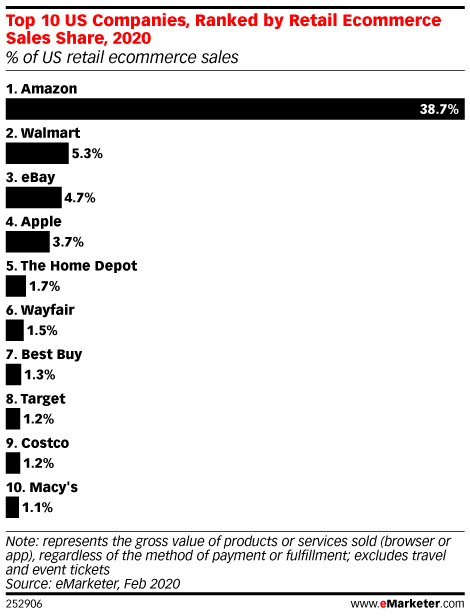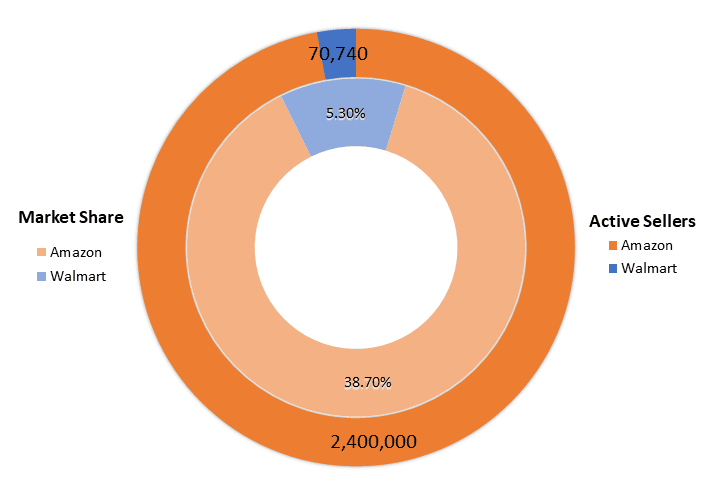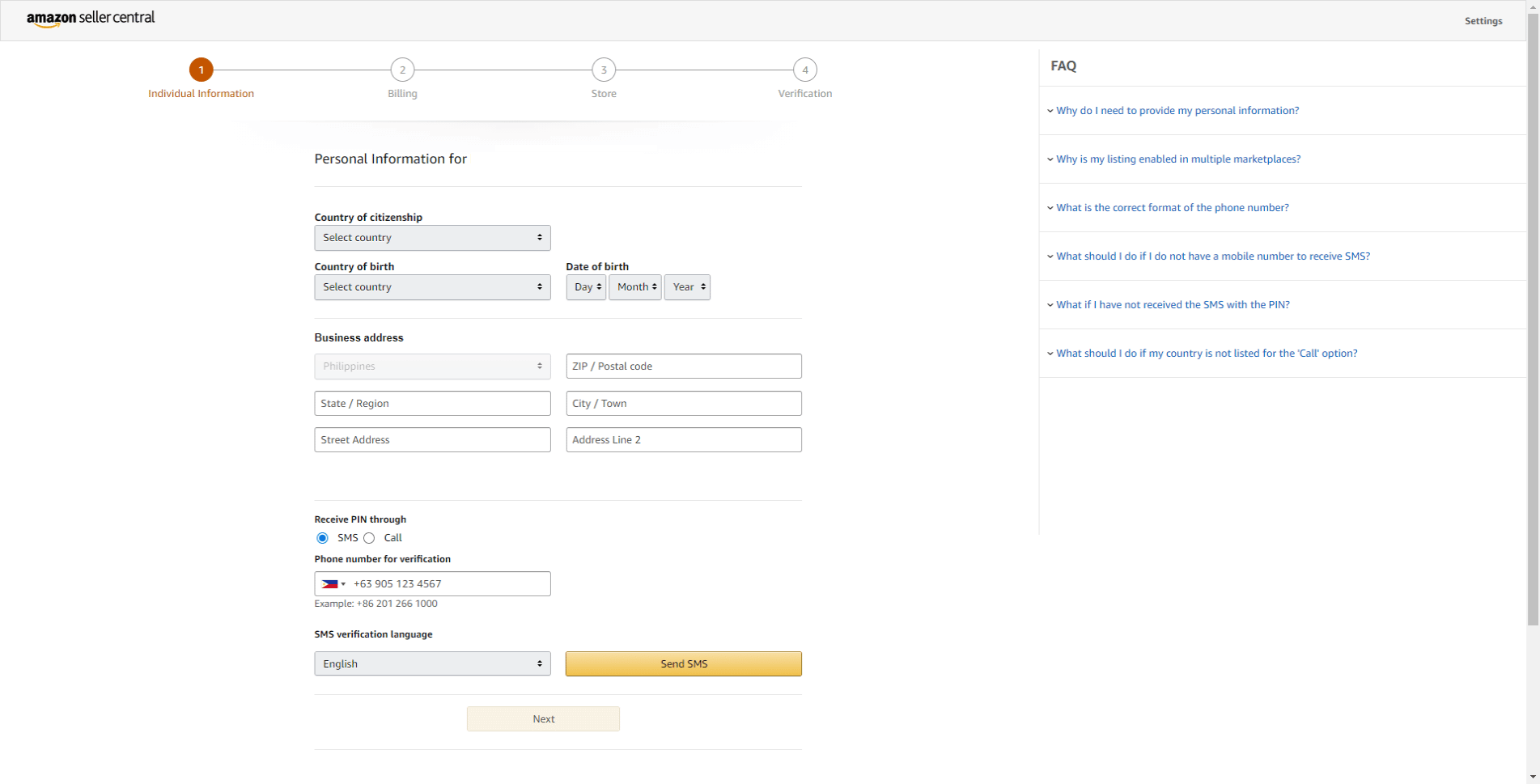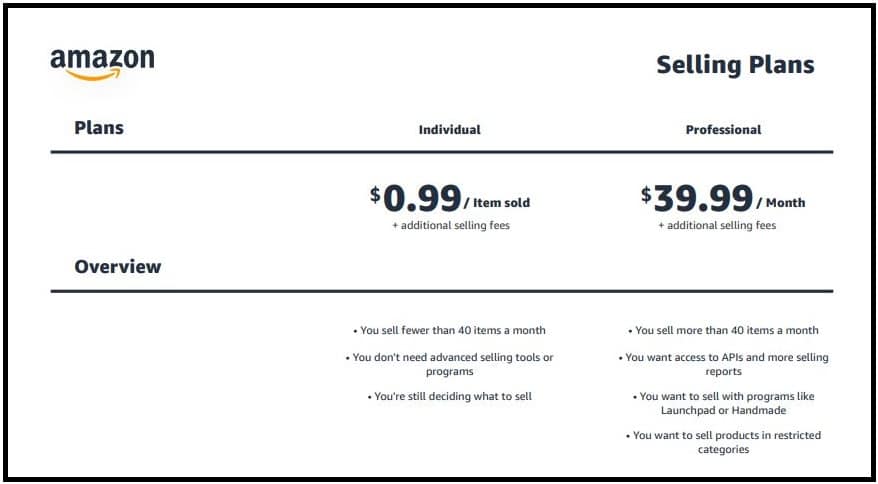Selling on Amazon vs. Walmart

In the race to become the omnichannel retail company, the two biggest contenders are Amazon and Walmart.
Amazon is currently the undisputed leader in ecommerce, while Walmart is the brick and mortar giant who’s gaining some serious online real estate.
This article will provide an overview of these two retail juggernauts and explore their nuances from an ecommerce seller’s perspective.
Topics Covered
- Overview of Amazon and Walmart
- Where Is It Easier To Sell: Amazon or Walmart?
- Which Has Lower Fees: Amazon or Walmart?
- Which Has Better Fulfillment Services: Amazon or Walmart?
- Which Has Less Competition: Amazon or Walmart?
- Which Is More Profitable For Sellers: Amazon or Walmart?
- Pros And Cons Of Selling On Amazon And Walmart
- How To Sell On Amazon
- How To Sell On Walmart
- Recap: Of Amazon vs. Walmart
- Our Verdict
- Conclusion
Overview of Amazon and Walmart
Amazon and Walmart compete in more ways than one, but they vastly differ in terms of the space within which they primarily operate.
While Amazon started out digitally and is still dominating the online space, Walmart kept expanding its physical footprint and is now the world’s largest company by revenue.
In recent years, Walmart has taken steps to narrow the gap between itself and Amazon on the ecommerce front, while Amazon has put up physical stores within the US.
Amazon, The Online Juggernaut
Amazon traces its humble beginnings to the garage of Jeff Bezos’s rented home in Seattle in 1994. Bezos started what was then Cadabra as a platform to sell books over the internet.
Fast forward a couple of decades and Amazon is now the biggest name in online retail and is one of tech’s Big Five alongside Facebook, Apple, Microsoft, and Google.
At present, Amazon controls nearly 40 percent of the US ecommerce market, blowing all other ecommerce companies out of the water.
Walmart comes in second with a little over 5 percent, with eBay close behind it.
 Source: eMarketer
Source: eMarketer
If you want the nitty-gritty of how Bezos went from working out of a dusty garage to potentially becoming the world’s first trillionaire, check out our deep dive into the history of Amazon.
Aside from flexing some serious muscles in terms of ecommerce, Amazon also owns The Washington Post, Twitch, Chinese online selling giant Joyo, and Whole Foods.
Walmart, The King of Brick And Mortar
In contrast to Amazon, which started out online from the get-go, Walmart’s genesis is more traditional and it is in fact a lot older.
The first Walmart store was opened by Sam Walton in Arkansas back in 1962. His key principle was to offer low prices and great service, which the company carries to this day.
Some quick Walmart stats:
- In the US alone, it operates over 5,000 retail units;
- It employs roughly 2.3 million people worldwide;
- Walmart Marketplace currently hosts 125,971 sellers, nearly half of which joined just last year;
- It is number one in the Fortune 500, with a whopping revenue of $524 billion for 2020.
Despite its unmatched physical presence, Walmart’s ecommerce footprint is relatively small.
It began its slow transition to ecommerce when it launched Walmart Marketplace back in 2009. This opened Walmart’s doors to third-party sellers and has since evolved into a viable ecommerce channel for established businesses.
Its growing portfolio of ecommerce brands include Bonobos, Hayneedle, and Moosejaw.
Where Is It Easier to Become A Seller: Amazon or Walmart?
We’ll be discussing how to apply as a seller on both marketplaces further down this article, but let me tell you right off the bat that it’s much easier to be approved as a seller on Amazon than on Walmart.
In fact, if you’re not already running a business, Walmart is practically a no-go.
Applying for Amazon is just a matter of filling out their forms, verifying your identity, and providing the billing information where Uncle Jeff can charge you for his slice of the pie.
On the other hand, Walmart Marketplace is far more selective. It favors established sellers and those who already have complex knowledge of running an ecommerce business.
Walmart looks at things like reputation, sales records, and seller ratings in deciding who to let in.
Advantage Amazon
It is much easier to become a seller on Amazon. Walmart is much more selective and it favors those already running a business.
Which Has Lower Selling Fees: Amazon or Walmart?
For a professional seller account, Amazon charges a flat monthly fee of $39.99. This includes access to more categories and services, and it might also be a way to weed out some of the bogus applicants, given Amazon’s relatively low barrier to entry.
On top of that, Amazon imposes a schedule of referral fees based on the type of item you sell.
Amazon also offers an individual account with no flat fee, but limited access. We’ll discuss some key differences between the two account types further down this article.
On the flip side, Walmart does not charge any recurring fee, but imposes a referral fee for selling items, just like Amazon. The fee varies based on the type of item sold, but it’s typically somewhere around 6 to 15%.
| Seller Fees | Amazon Individual Account | Amazon Professional Account | Walmart Marketplace |
|---|---|---|---|
| Account Fees | Free | $39.99 per month | Free |
| Charge per item sold | $0.99 | None | None |
| Referral Fee | 6% to 45%, depending on item type | 6% to 45%, depending on item type | 6% to 20%, depending on item type |
| Access to Advertising and APIs | No | Yes | Yes |
| Access to Categories | Over 20 | All categories | All categories |
| Listings | Up to 40 per month | Unlimited | Unlimited |
Advantage Walmart
Amazon charges a monthly fee for a professional account; Walmart does not. Amazon also charges a bunch of other selling fees, while Walmart just takes a referral fee for each item sold.
Which Has Better Fulfillment Services: Amazon or Walmart?
One of the obvious pros to selling on Amazon is the well-established Fulfillment by Amazon (FBA), which takes the grunt work of inventory management off your hands and into their football-field-long fulfillment centers.
Its services include storing, picking, packing, shipping, and handling returns for your products.
Walmart is catching up on that department, though.
In February 2020, it launched Walmart Fulfillment Services (WFS), providing its sellers with the same inventory management services offered by FBA.
FBA vs. WFS is a full-blown conversation on its own, but note that one key difference between them is that Walmart requires products to be shipped into its fulfillment centers from within the United States only.
In contrast, FBA allows you to import your products from outside the US and store them inside Amazon’s warehouses.
Advantage Amazon
Amazon's established FBA is hard to beat. Walmart is slowly catching up with WFS (It could very well leverage its massive brick and mortar empire), but it only accepts shipments from within the US for now.
Which Has Less Competition For Sellers: Amazon or Walmart?
At present, Amazon hosts 2.4 million active sellers worldwide, while Walmart Marketplace has only a little over 70,000.
 Sources: eMarketer, Marketplace Pulse
Sources: eMarketer, Marketplace Pulse
Amazon’s huge share in the ecommerce market means a higher potential for conversions. The downside is its highly saturated community of sellers makes it much harder to make your products stand out.
On the other hand, Walmart’s steep barriers to entry makes for a far less competitive environment and thus, there is a lot more opportunity for product exposure.
According to SimilarWeb, Walmart gets roughly 600 million visitors every month, and that’s not something you should pass up as an ecommerce business owner.
Advantage Walmart
Walmart has a far less competitive ecosystem than Amazon. There are fewer sellers and there is more opportunity to make your product stand out.
Which Is More Profitable For Sellers: Amazon or Walmart?
Since Walmart is founded on low prices and great service, there are certain rules to follow in order to avoid having your listings automatically unpublished.
The two most important are:
- Price Parity Rule: Walmart will automatically unpublish items if they can be bought for less from the same seller on a competing website (including shipping costs); and
- Price Leadership Rule: Walmart will automatically unpublish items if a customer would save by purchasing the same item on a competing website, regardless of the seller (including shipping costs).
Since you have less control over pricing on Walmart than on Amazon, your profit margins might not be as high as you would like them to be.
Advantage Amazon
Walmart has stricter pricing policies and will not hesitate to unpublish your item if it's not offered at the best price for the customer. This could limit your profit margins.
Pros and Cons of Selling on Amazon and Walmart
Now that you have a background of both platforms, here's quick rundown of the pros and cons of selling on Amazon vs. Walmart.
Selling on Amazon Pros
- Much larger marketplace (over 5x more monthly traffic than Walmart)
- FBA is more established than WFS, and it allows importing from outside the US
- Not much restriction on pricing
- Very easy to sign up as a seller
Selling on Amazon Cons
- Charges $39.99 a month for a pro account, while a Walmart account is free
- Imposes other selling fees on top of the flat monthly rate
How to Sell on Amazon and Walmart
If you have all the necessary information and requirements ready to go, becoming a seller on both platforms is pretty straightforward.
How To Sell On Amazon
To begin, head over to Amazon Seller Central and fill out the necessary forms.
For an in-depth walkthrough on how to start an Amazon business, check out our Ultimate Guide on How To Sell On Amazon.
New sellers have the option of putting up either an Individual or a Professional account.
If you are just starting out or are still deciding what to sell, the Individual account is the obvious choice, because there is no subscription fee – Amazon just charges $0.99 for every item you sell. You can upgrade to a Professional account whenever you’re ready.
A Professional account will set you back $39.99 each month. This grants you access to APIs and more selling reports, advertising, and access to sell on all categories.
From there, it’s just a matter of filling out the forms with the required information and uploading documents for verification purposes.
Approval usually takes several days.
How To Sell On Walmart
As for the Walmart side of things, the process is pretty much the same with Amazon.
The big difference for Walmart is that you do not actually start with account creation. Rather, you will be making a Request to Sell Application.
Walmart will then evaluate the information you provide, conduct its own assessment, and hit you up for an invitation to sell if you qualify. This process can take several weeks.
To begin, you will need to sign up at Walmart Marketplace.
Aside from your personal and billing information, Walmart requires that you have a business already setup.
Unlike Amazon, where you can apply as an individual and set up a business afterwards, Walmart asks for things like a US Business Tax ID (Your social security number won't suffice) and a verified address of business operations at the outset.
After a successful application on both platforms, the next step is to list your items and start running your ecommerce business.
Recap: Amazon vs. Walmart
Amazon is the better choice overall. It's a much larger marketplace, it's far easier to become a seller, and the potential for profit is much higher.
| Category | Amazon | Walmart |
|---|---|---|
| Easier to Become A Seller | ✓ | X |
| Lower Selling Fees | X | ✓ |
| Better Fulfillment Services | ✓ | X |
| Less Competition | X | ✓ |
| Potential for Profit | ✓ | X |
Amazon Wins!
Amazon is much more accessible to beginners. The application is pretty simple, and you have the option to start out with an individual account to test the waters.
Even if you already have experience in ecommerce, Amazon’s millions of monthly visitors and huge market share still make it the more profitable marketplace to sell in.
While the sheer number of sellers on Amazon makes it difficult to make your products stand out, knowing the right hacks will allow you to launch new products that are instant best sellers.
On the other hand, Walmart’s growing foothold in the ecommerce space makes it a solid choice for expansion.
There is much less competition, but admission into its third-party seller ecosystem is quite exclusive.
Buyer demographics for both marketplaces are almost identical, so running a seller account on both platforms could be a viable route as well, but keep in mind the management costs.
On that note, you will do well to check out some of the other channels outside of Amazon in case you want to diversify your sales channels.
Conclusion
Amazon still dominates the ecommerce market, and it's likely to do so for the next few years, but Walmart is no longer confined to its massive brick and mortar empire and is doing some serious catching up—perhaps making buyers and sellers the real winners.
Do you agree that Amazon is still the best sales channel for online sellers? Let us know what you think in the comments section down below.







This is a very informative and well written article. Thank-you. Amazon’s consumer website experience seems to have everything a consumer could ever imagine wanting. However the Walmart’s consumer website is frustrating, buggy and has only basic features.
Thank you. Walmart’s site definitely needs some work.
I launched my product line on Walmart’s platform in 2019. It was very painful, from the single outsourced product sampling partner to their kindergarten level PPC back end. Not worth the time and aggravation I spent on it. Unwound the whole thing in less than a year.
Sorry to hear that! Hopefully Walmart does a much better job in the years to come.